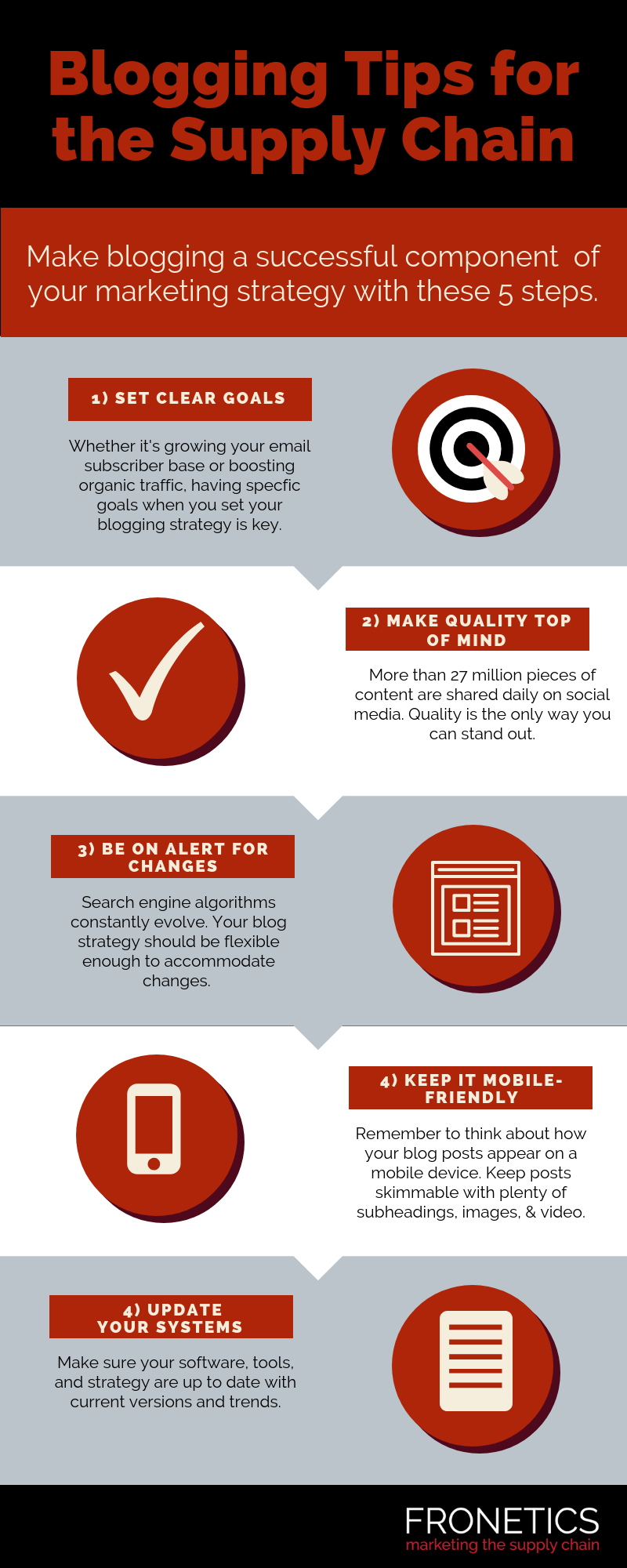
by Jennifer Hart Yim | Jan 24, 2019 | Blog, Consumer Electronics, Logistics, Supply Chain
Drones and other autonomous technology are actively being utilized in supply chains. Here’s how companies like PINC and Amazon are leveraging this new technology for inventory management.
Highlights:
- Drones and other autonomous technology are actively being utilized today in supply chains.
- PINC and Amazon are using autonomous technology for inventory management.
- By implementing new technologies, operating costs decreased by 20%, successfully boosting operating margins.
It’s been five years since Charlie Rose interviewed Amazon CEO Jeff Bezos on 60 Minutes about new innovations that Amazon was working on. Bezos revealed that Amazon was on the brink of a supply chain revolution involving octocoptor drones transporting parcels: Amazon Prime Air.
Tweets and status updates immediately conveyed consumer excitement that flying Amazon drones could deliver packages directly to doorsteps. And on the flipside, some employees of shipping carriers and brick-and-mortar retailers expressed fear that their respective industries would become obsolete.
Fast forward to the present… While advancements have been made in drone and autonomous technology, such as Amazon’s tests in the United States, Dominos’ self-driving delivery car, and Tesla’s self-driving truck, Bezos’ grand vision still remains a dream for impatient online shoppers.
That aside, drones and other autonomous technology are actively being utilized today in supply chains, and their usage extends beyond the conceived purpose of package delivery. One such use case that companies PINC and Amazon leverage this technology for is inventory management.
PINC: Aerial Inventory Robots
Less than 10% of the 250,000 warehouses and manufacturing facilities in the United States utilize automated storage and retrieval systems (AS/RS) for managing their inventories. Instead, they resort to manual human labor coupled with outdated storage solutions and antiquated inventory management measures. The need for automation in the factory setting is paramount.
PINC, a top provider of yard management systems, pioneered the use of drones in warehouses. Since 2014, PINC enacted the use of flying drone technology (PINC AIR, Aerial Inventory Robots) to track assets in warehouses.
PINC AIR Hardware
These “inventory robots” leverage barcode-reader technology and roam premises in an automated fashion, ensuring efficient inventory tracking. Technically speaking, the drones are equipped with optical sensors which allows them to take pictures of barcodes and obtain information for identifying and counting inventory.
Indoor aerial drones have limited GPS capabilities compared to their outdoor counterparts, and instead rely on indoor location services software to aid in setting the devices’ “travel boundaries” within warehouses.
PINC AIR Benefits
PINC AIR saves time, money, and offers a safer alternative to traditional rolling ladders for companies wishing to upgrade their inventory management system. Businesses spend less on workers’ compensation claims by reducing on-job injury rates. Their robots operate at the leisure of the company, are 300 times faster than a human performing the same work, and possess high accuracy levels. Even a daily inventory check provides a company a plethora of data.
PINC’s aerial drones replace the clipboards and spreadsheets of inventory counts by giving companies a platform that automatically displays the needed information in real time. Businesses could use this data to answer a variety of questions such as, “How many days do certain television brands sit in stock at certain facilities during the holiday season?”
Amazon Robotics (Kiva): Robots
In 2012, Amazon acquired Kiva for $775 million, phased-in its technology in its warehouses a few years later, and formed the subsidiary Amazon Robotics. Kiva robots replaced forklifts, large conveyor systems, and other human-operated machines. They’re efficient at performing monotonous tasks that previously fatigued employees, such as carrying and stacking bins around all day.
[bctt tweet=”In 2012, Amazon acquired Kiva for $775 million, phased-in its technology in its warehouses, and formed the subsidiary Amazon Robotics. Kiva robots replaced forklifts, large conveyor systems, and other human-operated machines. ” username=”Fronetics”]
Amazon made the move to continue pursuing competitive advantage in the e-commerce space along with maintaining control of the thousands of products in their fulfillment centers.
Some of Amazon’s robotics are large, 6-ton “Robo Stow” mechanical arms that move and stack bins around the factory. Others are used for carrying, transporting, and storing merchandise up to 3,000 pounds in an orderly fashion. Using these robots to stack and transfer merchandise saves aisle space in warehouses, allowing facilities to carry more inventory, meaning customers will be able to receive their goods quicker.
But what happened to the human employees? Did Kiva’s technology truly destroy thousands of jobs within Amazon’s warehouses? Is this the part when we rage against the machine due to the “robot uprising” stealing jobs?
Put your pitchforks down. No layoffs occurred, and, instead, robots and humans began working together. Despite skeptics’ views that automation is a job disrupter, SVP of Operations at Amazon Dave Clark assured, “[…] automation increases productivity and, in some cases, demand from consumers, which ultimately creates more jobs […] Warehouse workers would continue to work in technologically rich environments.”
In fact, since the Kiva acquisition, Amazon increased the number of warehouse employees by nearly 200% to an upwards of 125,000 workers due to the increased volume of orders. Signs show no stopping either with the rising demand of high-skilled programming jobs, technicians, as well as those working hand-in-hand with robots.
Existing employees took on new roles and increased their skillset. For example, some employees moved to “stow” products on shelves for the robots to move away, following computer instructions to optimize where merchandise goes.
From there, the robots line up when customer orders arrive. Human “pickers” grab the products from the robots’ shelves and place them in plastic bins. At this point, merchandise is packed in cardboard boxes for customers. Warehouse jobs become less monotonous as the products that employees place on the robots vary.
And with that said, the cost savings from this technology is astounding…
Cost Savings → Increased Efficiency
Operating costs decreased by 20% at a $22 million savings from each fulfillment center, successfully boosting operating margins. These savings are attributed to enhancing warehouse efficiency. Amazon found that cycle times decreased between 75% and 80% to just 15 minutes. As a side effect, additional space was allocated for inventory, increasing the amount of storage by 50%.
Drawbacks & Limitations of Autonomous Technology in Supply Chains
PINC: Barcodes & Drone Power Source
PINC’s optical technology requires packages to display barcode tags in plain sight for the drones to process accurately. This raises concerns for companies who do not have this ideal setup in their warehouses, potentially raising costs.
Another issue is the drone power source. AIR drones are powered with hydrogen fuel cells instead of batteries as they last longer and charge faster. PINC CEO Matt Yearling revealed that the hydrogen-powered technology can fly up to three hours, and only needs a few minutes to refuel. Companies therefore need to strategically consider when the drones are scheduled to fly and follow-up with refueling procedures when the drones’ power is depleted.
Amazon Robotics (Kiva): Robots Cost & Limitations
The robots themselves are also limited in the tasks that they can perform. For example, the “robotic arm” was designed to pick up packages of certain sizes. Amazon has been in the process of researching their flexibility to complete more advanced tasks, though for now human workers help in that regard. After all, “There are many things humans do really well that we don’t even understand yet,” says Beth Marcus, an Amazon employee who specializes in robotics.
While autonomous technology clearly has its benefits, it comes with a cost. Aside from the initial expense Amazon incurred with Kiva’s acquisition, an installation cost of $15 million per location is required, costing Amazon nearly $1.7 billion to fully deploy robots in all 115 locations. Despite this cost, Amazon nets a savings of $7 million per facility when compared with its recurring annual savings.
Conclusion
While introducing new technology into the supply chain space is sometimes deemed as “disruptive,” the ends justify the means for autonomous technology. Along with new jobs being created, modern manufacturing workers are gaining more skills by learning to operate robots. Drones and robots allow companies to effectively match their scale and flexibility with increased consumer demand.
PINC’s drones are a great way to establish an accurate representation of inventory in real time from past to present. This further strengthens a company’s promise to fulfill needs for its customers.
Amazon Robotics enables companies to maintain incredibly efficient workflows in their warehouses and fulfillment centers.
In a poll of executives by Techpro, an astonishing 64% reported that there were no plans to leverage autonomous technology in their businesses. Applying drones and robots to inventory management gives companies a competitive advantage and a head start in taking advantage of cutting-edge technology.
It just goes to show that autonomous technology further streamlines operations and supply chains by allowing companies to reach new heights.
This article was written by Spencer Black, an MBA student at the Peter T. Paul College of Business and Economics at the University of New Hampshire, specializing in Information Systems & Business Analytics. After graduating summa cum laude from UNH in Computer Science in 2015, he has been working at Pegasystems as a Software Engineer.
Related posts:


by Fronetics | Jan 23, 2019 | Blog, Current Events, Logistics, Marketing, Social Media, Supply Chain
Supply chain and logistics companies: here are your key takeaways on digital marketing trends from the Content Marketing Institute’s 2019 survey.
Highlights:
- For 2019, resolve to put your audience first.
- Building audience trust is crucial.
- Make sure your content is performing well by keeping pace with changes to search engines.
The Content Marketing Institute has published its ninth annual survey, giving insight into the most significant digital marketing trends and priorities for 2019. We’ll get into some key takeaways in detail, but perhaps the most striking finding was one that we’ve been talking about for years.
Of the top performing B2B marketers surveyed, the vast majority (90%) reported that they “prioritize the audience’s informational needs over their sales/promotional message.” That’s a powerful statistic. And when you consider that of the least successful B2B marketers, only 56% doing the same, it’s hard not to agree that the success gap is accounted for by this prioritization.
Digital marketing trends in 2019: making the audience a priority
Looking at the key trends from 2018, which will set the pace for 2019, some overall themes emerge. Foremost among them is the need to put audiences first. When 96% of the most successful B2B marketers report that their organizations have “built credibility and trust with their audience,” it indicates that those organizations have been highly effective at listening to their audiences and delivering value with their content.
Savvy marketers going forward will devote time and resources to researching the needs of their audience. Currently, only 23% of marketers are using email to encourage audience participation, build community, and bring new perspectives to their efforts. Not only that, but only 42% report seeking conversations with customers as a form of audience research.
Successful marketers in 2019 will lead the charge, putting email and other forms of digital marketing to use not only to publish their own content, but to form a deeper understanding of the needs and perspectives of their audience.
3 key digital marketing trends for 2019
1) Email campaigns and educational content win the day.
The majority (58%) of CMI’s survey respondents report that they have successfully used content marketing to nurture subscribers, audience, or leads within the past year. Their most successful methods were email (87%) and educational content (77%).
[bctt tweet=”When it comes to building trust among your audience, and nurturing relationships with prospects, educational content can be your best friend.” username=”Fronetics”]
We’ve written before about the overwhelming preference among B2B buyers for educational content like case studies. When it comes to building trust among your audience, and nurturing relationships with prospects, educational content can be your best friend. Similarly, email marketing, when used strategically, is an ideal way to usher prospects down the sales funnel with your content. For more insights, take a look through our top 7 email marketing posts from 2018.
2) Video continues to gain popularity.
We talk a lot about the value of video marketing for the supply chain. Once again this year, video has continued to increase its popularity. More than 50% of survey respondents increased their use of video marketing. Interestingly, a majority also bumped up their use of text-based digital marketing, as well as images (such as infographics, photos, and charts).
Video is on the rise all over the internet, and it gets easier all the time to create focused, engaging, and creative video content to market your business. That being said, successful B2B companies in the supply chain are increasingly outsourcing tasks like videography in order to ensure optimal video strategy, creation, production, and distribution across social media and content platforms.
3) SEO and search algorithms are a concern.
CMI’s survey asked about content marketing issues that organizations are concerned about and found that 61% are worried about changes to SEO/search algorithms. A significant minority (45%) are also concerned about changes to social media algorithms.
It’s true that just as people are changing how they search, search engines themselves are shifting their algorithms, becoming more sophisticated, and making the simple keyword model rapidly outmoded. Keeping up with the change can be overwhelming, but resources exist to help you. Our four-part series on writing for SEO can help you adjust your strategies and provides guidance on topic clusters and pillar content, as well as how to evaluate the success of your content.
What other digital marketing trends are you looking out for in 2019?
Related posts:


by Fronetics | Jan 22, 2019 | Blog, Content Marketing, Logistics, Marketing, Social Media, Supply Chain
Social media is an ideal way for supply chain and logistics companies to reach their audience. But too many businesses are still making these basic social media mistakes.
Highlights
- Social media only works as a marketing tool if you have a documented strategy.
- Don’t try to use every popular platform. Find where your target audience spends their time and focus on that platform.
- Don’t promote your brand. Engage with customers to build long-lasting relationships.
Video transcript:
I’m Kettie Laky. I’m the director of social media at Fronetics, and today we’re going to be talking about the basic mistakes that companies still make with social media.
As of 2019, there are approximately 2.8 billion social media users around the globe. So there’s no denying social media is a powerful tool for businesses to create brand awareness and generate leads. But it’s not going to be effective if it’s not done correctly.
There are three mistakes that businesses tend to make on social media still.
The first one is using objectives instead of strategy to drive their social media. Social media platforms are making updates and changes all the time to improve the customer experience. To weather those changes and to keep your customers engaged, it’s important that you have a strategy behind what you’re doing. The strategy should include content, the frequency of posts, and pillar content. A strategy’s also going to help you prove ROI.
The second mistake that companies tend to make is using all the most popular social media platforms. Social media platforms have differentiating qualities that appeal to different audiences. So get to know where your audiences are spending their time. For instance, if you’re marketing to millennials, you’re going to want to be on Twitter.
The third mistake companies tend to make on social media is by promoting rather than engaging. The companies that are having success with social media are finding innovative and creative ways to relate to their customers. So get your customers engaged, get them involved in your story, and you’re going to create long-lasting relationships with them.
If you need help with your social media strategy, give us a call or visit us at Fronetics.com.
Related posts:


by Fronetics | Jan 17, 2019 | Blog, Content Marketing, Logistics, Marketing, Supply Chain
Blogging should be a central part of your content marketing strategy. Here are our top tips for creating and sustaining a successful supply chain blog in 2019.
Highlights:
- Blogging needs to be a central part of your content marketing strategy.
- Focus on quality over quantity.
- Make all posts mobile-friendly.
It’s the start of a new year and the perfect time to start setting goals and strategizing how to achieve them. Hopefully, blogging is a big part of your strategy for 2019 — after all, supply chain companies should make blogging a central part of their content marketing strategy for all kinds of reasons.
[bctt tweet=”At last count, users share 27 million pieces of new content on social media every single day. Twenty-seven million!” username=”Fronetics”]
Making your supply chain blog stand out from the pack isn’t always easy. That’s why we created the infographic below. Read on for our top 5 supply chain blogging tips for 2019.
5 tips for your supply chain blog

(Made with Canva)
1. Set clear goals
We know, this one sounds obvious. But you’d be surprised how often marketers overlook this seemingly simple step or settle for general, vague goals. It’s true that blogging can have all kinds of positive impacts for the supply chain, but that doesn’t mean that you should just be blogging without a clear, documented set of goals specific to your business.
Whether it’s growing your email subscriber base, boosting organic traffic, or generating more qualified leads, having specific goals in mind when you set your blogging strategy is key. For one thing, it lets you target your efforts and generate content that is focused on achieving a specific result or set of results. Furthermore, having objectives allows you to be far more effective in evaluating your results, including measuring blogging ROI, and tweak your strategy accordingly.
What are your top three goals for your supply chain blog in 2019? Let us know in the comments!
2. Make quality top of mind
Ponder this for a minute: At last count, users share 27 million pieces of new content on social media every single day. Twenty-seven million. In a world of skyrocketing quantity, quality is ever-more important. There’s a huge amount of pressure on supply chain marketers to produce a constant stream of content, but the sad truth is, if you’re not producing high-quality, substantive content, you’re wasting time and energy.
For supply chain companies in particular, it’s crucial that every piece of your content be well-researched, clearly written, focused, and trustworthy. We know that producing consistently high-quality content isn’t easy, but, trust us: if you invest the time and energy to make your content stand out, you will see the results. To get you started or keep you focused, check out our guide to creating good content for logistics and supply chain marketers.
3. Be on the alert for changes
Particularly when it comes to search engine optimization (SEO), changes happen fast these days. In August of 2017, Google updated its algorithm, continuing a set of changes we’ve been watching for a while now. Voice searches are becoming increasingly prevalent, and researchers estimate that by 2020, 50% of all searches will be voice queries.
As these changes continue to happen, it’s crucial that your strategy is lithe and flexible, ready to adapt to a quickly shifting climate. This means keeping abreast of conversations going on in the industry, following blogs you trust and respect, as well as tracking your own results, and being alert to changing trends.
4. Keep it mobile-friendly
You don’t need researchers to tell you: people are increasingly receiving and reading content on their phones. Whether it’s social media, emails, or blogs, mobile usage continues to skyrocket as devices become more and more ubiquitous and user-friendly.
What does this mean for supply chain blogs? Of course, your website needs to have a visually attractive and accessible mobile version, but it’s also helpful to think about your blog posts in terms of how they appear on a phone. Keep your posts skimmable, with plenty of subheadings to orient the reader, and absolutely include video whenever possible.
5. Make sure your systems are up to date
We keep coming back to the reality of the rate of change these days. It can be exhausting and overwhelming for marketers to keep pace. Take the opportunity of the new year to make sure all your blogging-related tools are updated and running the current software.
As you’re keeping your tools fresh, it’s also a good time to make sure your procedures are running smoothly and are at a pace with the current marketing climate. This means evaluating responsibilities and results within your team, ensuring that your editorial calendar is serving you well, and taking a look at your data collection and reporting methods.
Bonus: What not to do in 2019
These might seem obvious, but again, you’d be surprised how may marketers fall victim to these blogging “don’ts.” We figured it bore repeating.
- Don’t: attempt to post content that doesn’t reflect your business’ “comfort zone.” Stick to what you know, and do it well.
- Don’t: copy and paste text or images from other blogs. Using other content for ideas is great. Copying it verbatim is verboten.
- Don’t: post at irregular intervals. Creating a content schedule and sticking it is key to establishing a loyal following and boosting your credibility.
What goals do you have for your supply chain blog this year?
Related posts:


by Elizabeth Hines | Jan 16, 2019 | Blog, Content Marketing, Logistics, Marketing, Supply Chain
Updated February 4, 2025
Digital marketing for the supply chain has become necessary to position your company to not only be found online, but also to be researched and to be compared to your competition.
Highlights:
- Digital marketing uses your website, related social media, and other online industry channels to showcase your industry knowledge and experience.
- Thought leaders are the informed trusted sources in their field of expertise.
- Supply chain and logistics industries need content marketing to achieve confidence and relationship-building with buyers.
Today’s B2B buyers are researching, evaluating, and coming to conclusions about companies without a single contact with a team member or salesperson.
This kind of B2B buying landscape requires cutting edge marketing strategies to showcase nut-and-bolt industries that have survived without them for many years.
Digital marketing for the supply chain
Digital marketing for the supply chain uses your website, related social media, and other online industry channels to showcase your industry knowledge and experience (rather than trying to convince people of it with a marketing message).
With inbound digital marketing, you publish relevant, informative information to adds value to every stage of a potential customer’s buying journey.
It is the content that you publish that walks them through the initial stages of the sales process.
What should you publish? A good content marketing strategy is about understanding the questions and concerns that are particular to your customer base, and offering quality information and analysis that answers those needs.
Showcasing thought leadership through digital marketing
Discovering and meeting the needs of your customers that go beyond your products and services will catapult you in their minds as a knowledgeable, helpful “thought leader” in your industry.
Thought leaders are the informed trusted sources in their field of expertise. They have innovative ideas, can showcase their thinking, and can replicate their successes again and again.
Consider it: Your business has so much more to offer than its primary product or service. You have a team of people with a tremendous aggregate of experience, expertise, and perspectives.
Allowing your customers this sort of access to your team’s experience and knowledge provides them with tremendous value outside the sales funnel, which builds trust and cultivates lasting, fruitful relationships.
Why digital marketing?
In this B2B buying landscape, supply chain and logistics industries need content marketing to achieve a level of confidence and relationship-building with buyers that used to come from face-to-face meetings. Potential and current customers will view your company as a valuable resource for everything related to not only your products and services but to the industry as a whole.
No time to execute?
The downside? Content marketing requires significant time, labor, and resources, and it can take quite some time to start reaping benefits. Feeling overwhelmed and like you and your team can’t possibly add on more marketing? Outsourcing certain key marketing tasks allows insourcing your core competencies while delegating specialized tasks to external experts.
This post originally appeared on EBN Online.
Related posts:

by Jennifer Hart Yim | Jan 15, 2019 | Blog, Consumer Electronics, Content Marketing, Logistics, Manufacturing & Distribution, Marketing, Supply Chain
It’s time for consumers to stand up to tech giants and force them to procure raw materials, used in an ethical and sustainable manner, for smart devices.
Highlights:
- Smart devices have created a dependency on batteries.
- Blockchain is being considered to track cobalt from its source in the production of lithium ion batteries.
- The number one way to decrease reliance on batteries is to reduce overall consumption of energy from batteries.
Battery technology is hot these days, no pun intended. Consumers are demanding high performance and safety from batteries as energy storage devices. Smart device manufacturers are responding by producing batteries that are smaller, safer, and store more energy; this performance comes at a cost. Increasingly rare and advanced materials are required to produce a safer and more high-performance battery for your smart device.
Cobalt is one of the key raw materials required to support the green revolution. Too bad over half of the world’s cobalt supply comes from the war-torn Democratic Republic of the Congo, where they are known to use child and slave labor in the mining of cobalt.
No one cares, however. Device manufacturers are delivering a price point and value that the consumers are willing to pay for. Supply chain reform could briefly interrupt this harmony, and peoples’ relationships with their smart devices could be jeopardized. The sad truth is that device manufacturers have pulled the wool over our eyes for too long and we have now become dependent on these batteries.
There is a solution, however.
Consumers have to stand up to tech giants such as Apple and Samsung and force them to procure raw materials used in an ethical and sustainable manner. This is happening in the “Responsible Cobalt Initiative” where blockchain is being considered to track cobalt from its source in the production of lithium ion batteries.
The blockchain method relies on adequate and honest oversight at the very site where the cobalt is being mined from the Earth in locations such as the DRC. How will honest oversight be implemented in what is known to be one of the most war-torn and corrupt regions of the world? Why wouldn’t Congolese mine owners simply lie about labor practices? In this case, the supply chain reform also requires political and cultural reform. I can’t help but think about that time when the U.S. tried to cause political and cultural reform in Iraq…
The bigger and more disturbing picture is that society is on track for over-reliance on lithium-ion batteries as energy storage devices. The number of smart devices is skyrocketing. And if electric vehicles achieve widespread adoption someday, the amount of lithium-ion batteries and cobalt required to fuel that growth will be staggering.
This is just one reason why the energy future of our planet is so uncertain. Surely the population will continue to grow. Smart device numbers will keep rising exponentially. The planet is going to need more energy and more energy storage. Hopefully, an increasing amount of energy will come from renewable and carbon-neutral sources. In order to maximize the potential of renewable energy installations, we need vast amounts of energy storage. Putting all our eggs in the lithium-ion battery basket is a very bad idea by-in-large due to the shortcomings of the cobalt supply chain.
[bctt tweet=”In order to maximize the potential of renewable energy installations, we need vast amounts of energy storage. Putting all our eggs in the lithium-ion battery basket is a bad idea due to the shortcomings of the cobalt supply chain.” username=”Fronetics”]
It is important to note that the number one, most surefire way to decrease our reliance on batteries is to reduce overall consumption of energy from batteries. Simply put, if everyone were to spend half as much time on their cell phones, we would need half as many cell phone batteries. The phone would have to be charged half as often, and the battery would last twice as long, thus requiring half as many batteries over time. Maybe we would even start talking to each other once again.
In addition to reducing consumption, humankind must pursue radical technological advances in the field of energy storage. Power-to-gas and room-temperature-superconductors are two cutting-edge technologies that have the potential to revolutionize the way we store energy. Distributed generation, smart grids, and passive heating and cooling are some more conventional ways to reduce the energy storage burden placed on large-scale renewable generating facilities.
To make a long story short, the force of corporate greed and government corruption has overpowered the force of the consumers’ desires up until now. I am sure that the vast majority of smart device users, if asked, would be opposed to the use of child and slave labor in the mining of raw materials for their smart devices. I, for example, would be willing to pay more for a device that guarantees fair and ethical trade up and down the entire supply chain. We must never forget that we the consumers have the ultimate power. If we want Apple or Samsung to change their ways, we can easily do that. Get out and vote. Make your voice heard. Stand up to corporate greed and government corruption. Take a break from your cell phone and talk to the person next to you. I promise the world will be a better place.
This article was written by Peter Chivers, an MBA student at the Peter T. Paul College of Business and Economics at the University of New Hampshire. Pete is an engineer and MBA student with a passion for innovation and the outdoors. He spends his free time with his family hiking mountains, gardening, and building ice fishing contraptions.
Related posts:












